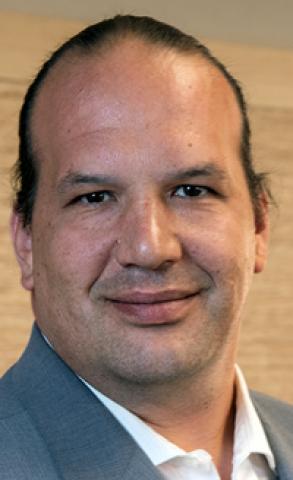Abstract
Excerpted From: Kekek Jason Stark, Indian Policing: Agents of Assimilation, 73 Case Western Reserve Law Review 683 (Spring, 2023) (449 Footnotes) (Full Document)
 In the wake of the protests calling for police reform, driven by the events surrounding the deaths of George Floyd, Breonna Taylor, Michael Brown, and so many others, including Cecil Lacy (Tulalip Tribes) and Rene Davis (Muckleshoot Indian Tribe), as well as the sexual assault at the hands of the police involving L.B. (Northern Cheyenne Tribe), I began to question the role and history that the police have played in Indian Country as agents of assimilation. While conducting research for this Article, it became apparent that following the enactment of the Indian Civil Rights Act, a lot of work and research was conducted on the status of tribal justice systems. Considering the recent events detailed above, this Article seeks to further that earlier analysis and ask the question: Where are we at with our efforts to re-indigenize Indian Country policing fifty years later? This Article attempts to begin to answer that question.
In the wake of the protests calling for police reform, driven by the events surrounding the deaths of George Floyd, Breonna Taylor, Michael Brown, and so many others, including Cecil Lacy (Tulalip Tribes) and Rene Davis (Muckleshoot Indian Tribe), as well as the sexual assault at the hands of the police involving L.B. (Northern Cheyenne Tribe), I began to question the role and history that the police have played in Indian Country as agents of assimilation. While conducting research for this Article, it became apparent that following the enactment of the Indian Civil Rights Act, a lot of work and research was conducted on the status of tribal justice systems. Considering the recent events detailed above, this Article seeks to further that earlier analysis and ask the question: Where are we at with our efforts to re-indigenize Indian Country policing fifty years later? This Article attempts to begin to answer that question.
The Introduction of this Article provides a roadmap and an overview of the contents to be discussed. Part I examines the origins of Indian police forces. It analyzes these origins through a review of the traditional methods of law enforcement implementation and traditional law enforcement infrastructures, as well as the implementation of the assimilation policy through justice systems and policing. Part II examines the furtherance and indoctrination of the assimilation policy through justice systems and policing. It analyzes the effects of the establishment of the Indian police, the further deterioration of tribal justice systems through the extension of federal and state laws into Indian Country, how the Indian policy system as implemented was not able to establish any legal status under U.S. or tribal law, the effects of the Indian Reorganization Act and the establishment of modern tribal courts, and how the modern tribal law infrastructure supports the perpetuation of historical assimilation policies and interferes with effective law enforcement. Part III examines modern policing and determines whether tribal courts are perpetuating assimilative law enforcement principles or whether tribal courts are implementing traditional law principles. It analyzes tribal law cases involving investigative policing, obtaining evidence, interrogations, proactive policing, and the abuse of power. Part IV examines a path for the return to traditional law principles of justice. It analyzes questions surrounding the application of tribal customary law, the use of traditional law enforcement principles in modern-day tribal court cases, the implementation of policing based upon the principles of justice and fairness, and alternative policing strategies. Finally, I conclude that Tribes need to be included in the national conversation efforts on police reform; Tribes need federal appropriations to rebuild their systems that were outlawed, criminalized, and diminished; Tribes need to revitalize our traditional laws, governance structures, and our kinship and clan systems; and lastly Tribes need to be able to heal.
[. . .]
In the implementation of police reform in Indian Country, Tribes need to be included in the national conversation efforts on police reform. This is extremely important because as shown in this Article, the bureaucratic system of oppression needs to be amended to release Tribes from the burdens of assimilative policy. In addition, federal appropriations are needed to rebuild the traditional tribal justice systems that were outlawed, criminalized, and diminished. To revitalize our traditional laws, governance structures, and our kinship and clan systems we need to support our warriors that preserved our languages, cultures, and traditions. We also need to be patient and support our governments, courts, and law enforcement personnel as they reengage with our traditional laws and structures. As Matthew L.M. Fletcher opined, “The work of healing was more important than the security function. Healing helped to restore harmony.” He asks us to “[i]magine a police department that heals as well as it protects and serves.” Only then will Indian police forces be able to shed the designation of being “agents of assimilation” and truly become “agents of healing.”
Assistant Professor of Law, Co-Director of the Indian Law Program and the Margery Hunter Brown Indian Law Clinic, Alexander Blewett III School of Law at the University of Montana.


